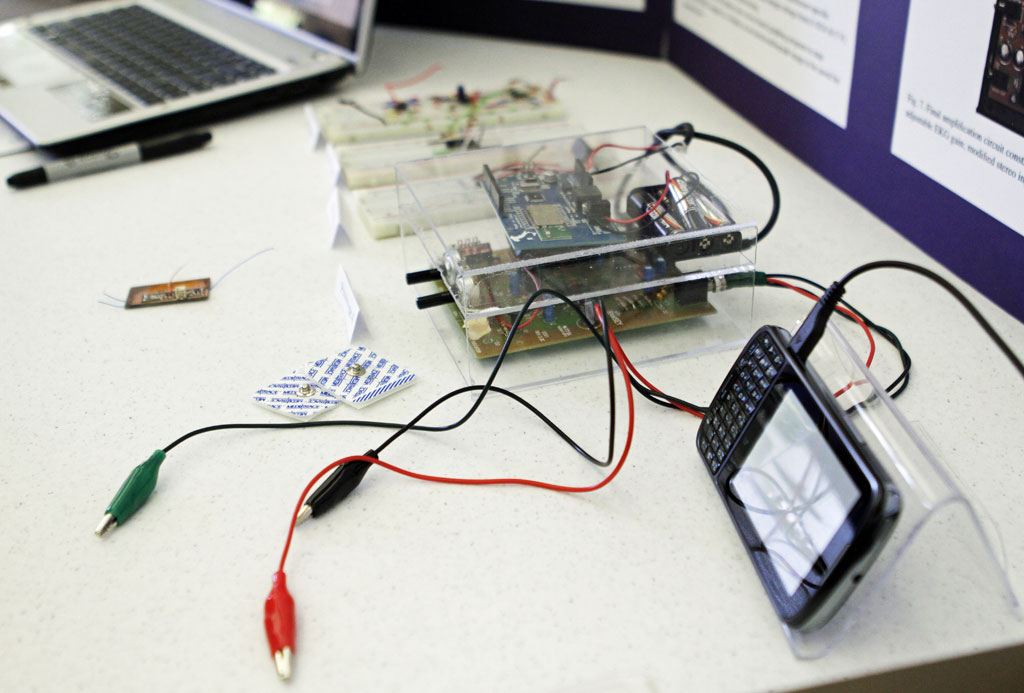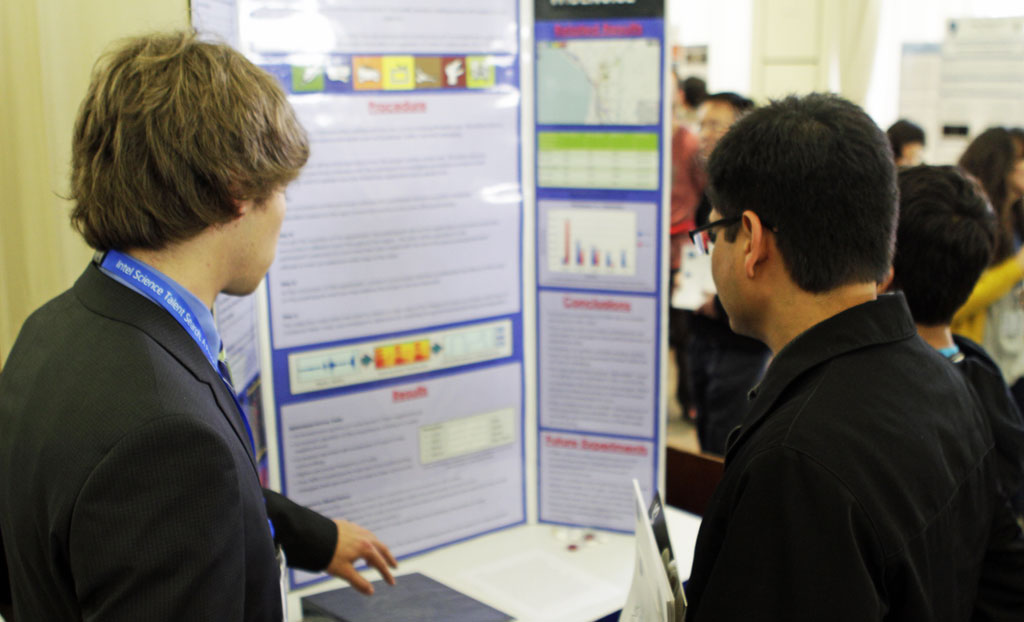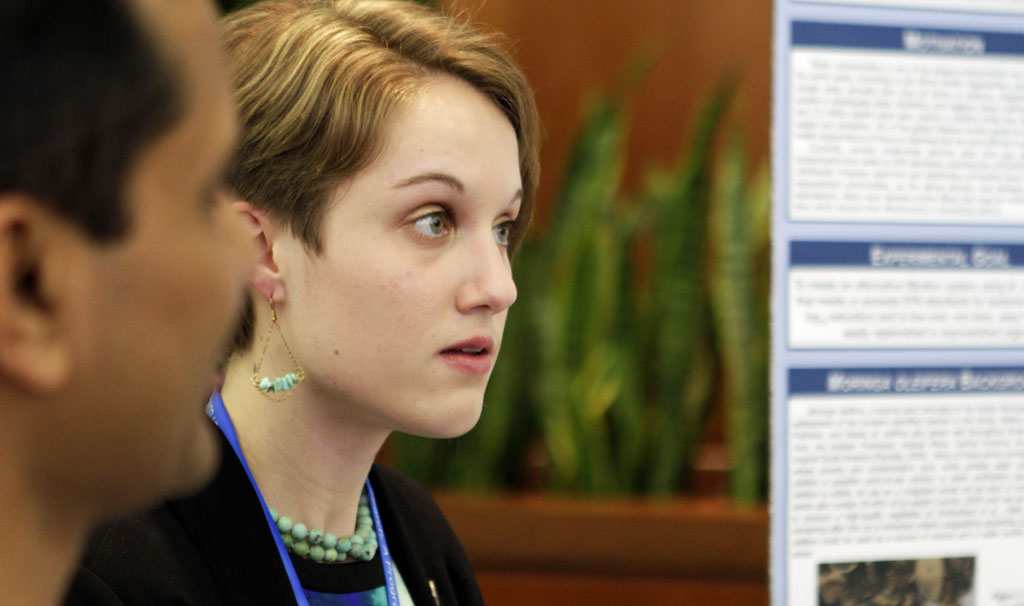INTEL Science Talent Search
Teenagers offer a glimpse at the future of scientific innovation


While many teenagers were out causing trouble this weekend a group of 40 finalists chosen from more than 1,700 applicants displayed their work at the Science Talent Search sponsored by The Society for Science and the Public in conjunction with the INTEL Foundation. The group of ultra-sharp 17-18-year-old high school seniors filled the National Geographic Society in Washington, DC for the event, considered one of the most prestigious pre-college science fairs (Prizes range from $100,000 for the first place winner to $20,000 for the top 10 and $7,500 for the remaining 30 finalists). The platform provides the scientific community and the general public with the opportunity to glimpse the next generation of scientific trends and innovators—since the STS launch in 1942, more than 100 of their participants have been rewarded with Nobel prizes and other highly distinguished scientific recognitions.
The selection of projects reflects the students’ ability to solve real-world problems or to address scientific challenges with innovative approaches. While the research process is accomplished along with the support of teachers and scientist mentors, projects are executed and presented independently by students. According to INTEL Foundation executive director Wendy Hawkins, research has increasingly evolved toward cross-disciplinary fields, pointing out that this seems to be where the most potential for scientific change exists nowadays. Hawkins also notices among the students the desire to focus on personal passions where life experiences and interest in helping others serve as driving forces. To our basic scientific understanding three projects stood out for their pragmatism and ability to take into account resource practicalities, the needs of developing countries or interesting emerging scientific trends such as citizen science and smart cities.

Catherine Wong, 17, from Morristown High School in New Jersey conceived of a mobile phone system capable of monitoring heartbeats through wireless EKGs. The research she presented caught our attention for its combination of low-cost implementation, accurate technology and its focus on populations in need. Inspired by a 1997 exhibition at the Cooper Hewitt Musem called “Design for the Other 90%” that became an ongoing series on the majority of the global population often overlooked by professional design solutions, Wong started developing her research by herself in her own garage. Her focus on a mobile phone platform and the developing world stemmed from the desire to maximize social impact and life-changing potential. Also present at Google Science Fair, Wong has been contacted by the University of Michigan for the development of nano-wireless EKG.

Inspired by citizen scientists and smart cities, Chris Traver, 18, from Croton-Harmon High School in New York set his focus on behavioral sciences to develop Widenoise, an iPhone app capable of recording ambient noise. Data collected from multiple phones is then aggregated on the cloud where levels and types of noise are visually represented on a map. Intended to help policymakers manage community noise levels, his research also influences our understanding of the qualitative perception of noise and brings a lesser-considered type of pollution to the forefront. While we would expect loud sounds to be the most perturbing, it is sometimes softer but more unpleasant sound that the reason for noise discomfort.

Meghan Marjorie Shea, 18, from Unionville High School in Pennsylvania researched the development of a low-cost water purification system using the crushed seeds of the Moringa oleifera plant. While previous research based on similar principles had proved to be too complicated, Shea’s system of implementation is more cost-effective and could actually help lower E.Coli bacteria levels in water by 99%. Still in development, Shea’s project aims to generate both public health and economic development in tropical and subtropical areas where this particular variety of plant is widely available.
Winners will be announced on 13 March on the Intel STS website.
Images by Gaspard Nemec












